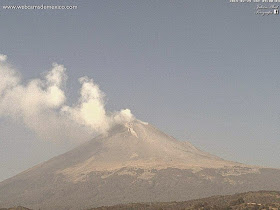The British Geological Survey recorded a Magnitude 3.0 Earthquake at a depth of 10 km, roughly 22 km to the southwest of the island of Jersey in the Channel Islands at about 10.55 pm GMT on Wednesday 25 February 2015. Although large for the area, the quake was still to small to present any threat to human activity, and there were no reports of any damage or injuries relating to this event, though it was reportedly felt on the island.
The approximate location of the 25 February 2015 Jersey Earthquake. Google Maps.
The precise cause of Earthquakes around the UK can be hard to determine; the country is not close to any obvious single cause of such activity such as a plate margin, but is subject to tectonic pressures from several different sources, with most quakes probably being the result of the interplay between these forces.
Britain is being pushed to the east by the expansion of the Atlantic Ocean and to the north by the impact of Africa into Europe from the south. It is also affected by lesser areas of tectonic spreading beneath the North Sea, Rhine Valley and Bay of Biscay. Finally the country is subject to glacial rebound; until about 10 000 years ago much of the north of the country was covered by a thick layer of glacial ice (this is believed to have been thickest on the west coast of Scotland), pushing the rocks of the British lithosphere down into the underlying mantle. This ice is now gone, and the rocks are springing (slowly) back into their original position, causing the occasional Earthquake in the process.
Simplified diagram showing principle of glacial rebound. Wikipedia.
Glacial rebound seems an unlikely cause of Earthquakes beneath the Channel Islands, an area that was never glaciated, but this is not entirely the case. The northwest of Scotland is rising up faster than any other part of the UK, but the Earth's crust onland in the UK is fairly thick, and does not bend particularly freely, whereas the crust beneath the Channel is comparatively thin and more inclined to bend under stress. Thus uplift in Scotland can cause the entire landmass of Great Britain to pivot, causing movement in the rocks beneath the Channel.
Map showing areas of the British Isles currently rising or sinking as a result of glacial rebound. Wikipedia.
Witness accounts of Earthquakes can be useful to geologists trying to understand the processes that cause them and the rocks beneath the surface. If you felt this quake (or if you were in the area but did not feel the quake, which is also useful information) then you can report it to the British Geological Survey here.
See also...
The British Geological Survey recorded a Magnitude 1.9 Earthquake at a depth of 6 km, roughly 15 km to the southwest of the island of Jersey in the Channel...
The British Geological Survey recorded a Magnitude 1.8 Earthquake at a depth of 7 km beneath the eastern part of the island of Jersey in the Channel Islands...
A Magnitude 2.9 Earthquake at a depth of 10 km occurred beneath the commune of Miniac-Morvan, near St Malo in Brittany, northern France, slightly after 11.35 pm local time (slightly after 9.35 pm, GMT) on Wednesday 3 July 2013, according to the Laboratoire de Détection et de Géophysique. There are no...
Follow Sciency Thoughts on Facebook.














































